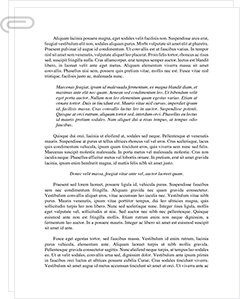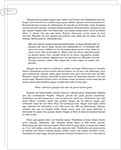 Study Document
Study Document
Culture on Brand Building in Term Paper
Pages:8 (2082 words)
Sources:26
Subject:World Studies
Topic:Western Culture
Document Type:Term Paper
Document:#75271713
As a result, not only are foreign markets changing to adapt to the Chinese marketplace needs, the Chinese marketplace, and consumer, are likewise adapting and changing to meet the needs of the global market. For instance, the economic boom in China's urban areas is creating a new consumer culture where the consumer has more disposable income to work with. This itself has effected consumer preferences and patterns within the Chinese marketplace. The general result is that a more sophisticated Chinese consumer is emerging and foreign companies need to market to their sophisticated needs while at the same time marketing to the general population's needs.
Therefore, the most effective way for a company to build a strong brand name in the rapidly emerging Chinese market is to adapt itself to the rapidly changing Chinese culture. To do this, it is important that the foreign company create a local presence and thus shed some of the "foreign corporation" reputation away. This can be done by hiring local staff and cooperating with local business professionals in developing a marketing and branding strategy.
The bottom line is, despite the numerous challenges that the Chinese market presents, a company an be successful if they spend the time and resources necessary to gain an in-depth understanding of the local culture and the Chinese consumer's attitudes and thus become prepared to cope with the many unexpected intricacies of the Chinese marketplace.
Bibliography
Apadu, K., and Sevgin, E. (1991): "Success and Failure of Japanese Companies' Export Ventures in High-Tech Industries," International Marketing Review. Vol. 8, No. 2, p.p. 66-76.
Armstrong, E. (2002): "Communication's Starring Role and Standard Chartered Bank," Strategic Communication Management. Vol. 6, No. 4, p.p. 10-13.
Ayala, J. And Lain, R. (1996): "China's Consumer Market: A Huge Opportunity to Fail?," McKinsey Quarterly, No. 3, p.p. 56-72.
Ayala, J., Lai, R. Mok, B. et. al. (1996): "Winning China's Consumer Market in the 21st Century," McKinsey Quarterly, No. 2, p.p. 178-181.
Chan, W.K., Perez, J. And Perkins, a. (1997): "China's Retail Markets are Evolving More Quickly than Companies Anticipate," McKinsey Quarterly, No. 2, p.p. 206-212.
Dong, L. And Helms, M. (2001): "Brand Name Translation Model: A Case Analysis of U.S. Brands in China," Journal of Brand Management. Vol 9, No. 2, p.p. 99-115.
Fan, Y. (2002): "The Art of Brand Renaming," Brand Strategy. No. 158, p. 32.
Hines, S. (2001): "Culture Shock," Brand Strategy. No. 153, p. 3.
Hofstee, G. (1994): "The Business of International Business is Culture," International Business Review. Vol. 3, No. 1, p.p. 1-14.
Kleppe, I., Iversen, N. And Stensaker, G. (2002): "Country Images in Marketing Strategies: Conceptual Issues and an Emperical Asian Illustration," Brand Management. Vol. 10, NO. 1, p.p. 61-74.
Melewar, T.C. And Saunders, J. (1999): "International Corporate Visual Identity: Standardization or Localization," Journal of International Business Studies. Vol. 30, No. 3, p.p. 583-598.
Muhlbacher, H., Dahringer, L. And Leihs, H. (1999): International Marketing: A Global Perspective. New York: Thompson.
Pan, Y., Tse, D. And Xiaolian, L. (2002): "Evolution of Brands in Transitional Economies: The Case of China 1993 to 1998." Working Paper. www.allaboutbranding.com.
People's Daily (2000): "Draft Amendment Product Quality Law to Boos Consumers Rights. www.fpeng.peopledaily.com.cn.
Schmitt, B. And Pan, Y. (1994): "Managing Corporate and Brand Identities in the Asia-Pacific Region," California Management Review. Summer, p.p. 33-49.
Tam, J. And Tai, S. (1997): "The Psychographic Segmentation of the Female Market in Greater China," International Marketing Review. Vol 15, No. 1, p.p. 61-77.
Terpstra, V. And Sarathy, R. (2000): International Marketing (8th Ed.). Forth…
Sample Source(s) Used
Bibliography
Apadu, K., and Sevgin, E. (1991): "Success and Failure of Japanese Companies' Export Ventures in High-Tech Industries," International Marketing Review. Vol. 8, No. 2, p.p. 66-76.
Armstrong, E. (2002): "Communication's Starring Role and Standard Chartered Bank," Strategic Communication Management. Vol. 6, No. 4, p.p. 10-13.
Ayala, J. And Lain, R. (1996): "China's Consumer Market: A Huge Opportunity to Fail?," McKinsey Quarterly, No. 3, p.p. 56-72.
Ayala, J., Lai, R. Mok, B. et. al. (1996): "Winning China's Consumer Market in the 21st Century," McKinsey Quarterly, No. 2, p.p. 178-181.
Related Documents
 Study Document
Study Document
Branding New Service Dominant Logic
Branding in Service Markets Amp Aim And Objectives Themes for AMP Characteristics Composing Branding Concept Branding Evolution S-D Logic and Service Markets Branding Challenges in Service Markets Considerations for Effective Service Branding Categories and Themes Branding Theory Evolution S-D Logic and Service Markets Branding Challenges in Service Markets Considerations for Effective Service Branding Branding Concept Characteristics Characteristics Composing Branding Concept Sampling of Studies Reviewed Evolution of Branding Theory Evolution of Marketing Service-Brand-Relationship-Value Triangle Brand Identity, Position & Image Just as marketing increasingly influences most aspects of the consumer's lives, brands
 Study Document
Study Document
Branding Strategies Assessing the Influence
This level of the maturity model is a transitory one and is focused more on either small, incremental gains from the first level, which is Reacting. In the Reacting layer of this proposed Branding Maturity Model, the majority of brand departments have a decidedly "every department for itself" approach to process maturity and have information flow that is purely dependent on personal productivity applications only. That is to say
 Study Document
Study Document
Understanding Branding Techniques
Branding, And Branding Management Brands and branding are not new concepts in business. During the Stone Age, hunters used particular brands for their swords in hunting. Since then, the concept of brands and branding has developed in terms of knowledge, procedures and theories. Some theories used concerning branding, originated primarily because of the development of commercials in media. Companies have realized the importance of branding, which has added to the interest
 Study Document
Study Document
Brand Management Nike Brand Management Nike's Progression
Brand Management Nike Brand Management Nike's progression from selling tennis shoes out of the back of founder and CEO Phil Knight's car to one of the most respected and known brands globally initially began with naming the company after the Greek Goddess of victory. Transitioning from being Bleu Ribbon Sports to Nike also led to the company going public and gaining the necessary funds to finance growth and expansion. It was after
 Study Document
Study Document
Brand Equity Measurement
Brand Equity Measurement Consumer perceptions extensively influence and manipulate their purchasing behavior. Service and goods companies identify the significance of marketing strategies in influencing consumer behavior. All brands that attract high profits have desirable loyalty levels among customers. Customers tend to have a high level of perception of quality of goods and services that dominate markets in different industries. The power that emanates from consumers' goodwill and recognition of a brand,
 Study Document
Study Document
Building Effective Customer Relationships- Apple
But in a world that changes so drastically in such short periods of time and in a market filled with fierce competition and customers which change and increase their needs on daily basis, achieving customer loyalty is quite difficult; ergo, Apple's need to develop and implement better and stronger CRM policies. Current Features of Apple's CRM Given the specific nature of their businesses and the fact that after the purchase has



